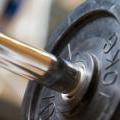-

How would you design the seating for an Olympic stadium to give spectators the best view of events? This geometry and modelling activity is designed to be accessible to both GCSE and A-level maths students (Key Stage 4 and Key Stage 5), who can tackle it at different levels.
-

At what angle should you release the shot to break Olympic records? This activity gives students the opportunity to investigate projectile motion in a real-life context, and is aimed at A-level students (Key Stage 5).
-

Take a look at the amazing limits that athletes push themselves to in search of Olympic glory. Which events see the fastest speeds, furthest distances and highest forces? This activity challenges students to undertake some research, calculate with measurements and different units, and make comparisons, and has a number of different parts aimed at students across both Key Stages 4 and 5.
-

The use of performance enhancing drugs is the dark side of sport, and there are stringent measures in place to try to screen athletes. But what's the likelihood that an athlete who fails a drug test has actually taken the banned drug? What do you think is the fairest way to construct a drug-testing regime? This activity, aimed at A-level students, explores some of the mathematics involved.
-

These 10 questions encourage students to explore mathematical modelling in the context of several different sports including track and field athletics, shooting, football, tennis, basketball and gymnastics. This activity is designed to be accessible to A-level mechanics students (Key Stage 5).
-

If you are training seriously for any sport then you are in the business of optimisation - doing all you can to enhance anything that will make you do better and minimise any faults that hinder your performance. John Barrow takes a look at how mathematics helps athletes optimise their performance in the high jump and pole vault in this article aimed at older students (Key Stages 4 and 5).
-

What would be the ideal weather conditions for breaking the world record in the shot put? This activity encourages A-level mechanics students (Key Stage 5) to explore and discuss modelling assumptions.
-

Could the location of the Olympic host city have an effect on weightlifting events? This activity provides an interesting context in which to engage with weight, mass and gravitation, and is aimed at A-level students (Key Stage 5).
-

Does weight give shot putters an advantage? This activity encourages students to engage in statistical analysis, and is aimed at GCSE and A-level students (Key Stages 4 and 5).
-

Squash isn't an Olympic sport (yet!) but it has an interesting scoring system. If you reach 8-all in a game of squash, when should you decide to play to 9 points rather than 10? This activity is a starting point for mathematical investigation, and is designed to be accessible to students at Key Stages 4 and 5.
These activities are based on maths normally encountered while studying at A-level in the UK (ages 16 to 18). KS5 students may also enjoy our articles.

